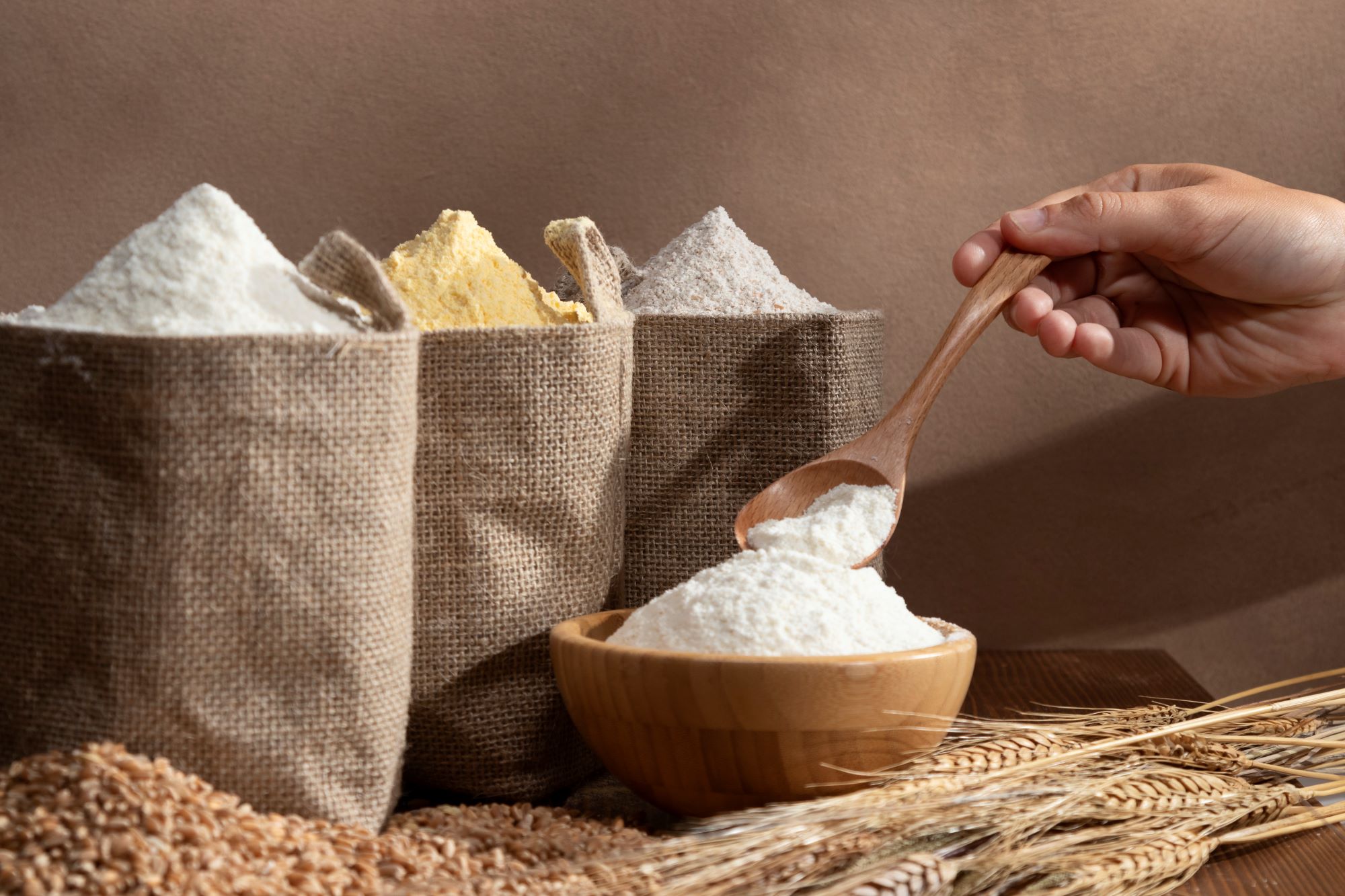From eczema to poor immune health, it seems that our gut health influences our bodies in more ways than we previously realized. It is estimated that over 3/4 of immune system resides in our intestinal track, with over 500 species of bacteria present. If major diseases could form in the gut, it is logical to realize that perhaps optimal health begins here as well.
Gut-friendly foods ranges from fermented vegetables like Kimchi and Sauerkraut to Tempeh and Yogurt. Believe it or not, these foods are actually cultured (another word for “fermented”).
There seems to be some truth to the ol’ Betty’s “better butter made her batter better” tongue twister after all. It is called cultured butter and no, this is not a sophisticated butter with a thick English accent reminding you that ‘manners maketh man’.
What makes butter ‘cultured’?
Cultured butter is butter conceived from a fermented cream. There are several methods in making cultured butter with the traditional one being through fermentation. During fermentation, the cream naturally sours as bacteria convert milk sugars into lactic acid in which produces a slightly tangier taste. Due to the clarification process (where certain solids are removed) in culturing butter, the resulting butter is much silkier than its conventional counterpart. The fermentation process also produces additional aroma compounds, including diacetyl, which makes for a fuller-flavored and more “buttery” tasting product.
Manufacturers in today’s world make cultured butter from pasteurized cream whose fermentation is produced by the introduction of Lactococcus and Leuconostoc bacteria. Cultured butter takes advantage of the bacteria cultures through the fermentation process. These bacteria cultures, which are not present in regular butter, provide many benefits with the primary one being that it creates a better and healthier environment for your digestive system.
Other (less sophisticated) types of butter
- Original / Sweet Cream Butter
Sometimes called “Unsalted butter”, this is the most versatile variety. It can be used for every cooking job, from baking to sauteing. Made from only milk or cream (or sometimes both), it contains at least 80 percent milk fat—the fatty particles in milk that are separated out to make cream.
- Salted Butter
Just like the original, but with the addition of salt. Many people reach for this when buttering bread, but use caution when you’re cooking or baking, since it is already salted. You wouldn’t want your soup to taste like the sea.
- Ghee
Ghee is clarified butter, but simmered longer to bring out butter’s inherent nutty flavor. Traditionally made from buffalo or cow’s milk, the process of making ghee removes the water and milk fats, leaving a high-smoke point fat (can be heated at high temperature longer before it starts to smoke)
- Margarine
Simply put: Imitation butter. Has a similar soft texture to spreadable butter but contains far less real butter and sometimes none at all. Instead, it is made primarily from a blend of vegetable oils. It boasts fewer calories than regular butter but has a higher percentage of polyunsaturated and monounsaturated fats. Some brands may also include trans-fat.
Why Cultured is Better
- Gut-health
Cultured butter contains lactic acid-producing bacteria that breaks down both lactose (milk sugars) and casein (milk proteins). Lactose and casein in milk are sometimes difficult for people to digest, especially those who are lactose intolerant. The bacteria cultures help break down the lactose to make it easier to digest as compared to traditional dairy products.These helpful bacteria cultures is said to also promote a healthy environment for your gastrointestinal tract, meaning that cultured butter could act as a probiotic supplement of sorts.Additionally, cultured butters contain certain enzymes that help us to absorb calcium and other minerals. Furthermore, vitamins B & C which aids cell metabolism and the repair of tissue are present in higher concentrations in cultured butter as compared to its conventional counterpart.
- Flavour
Cultured butter normally has a distinct and desirable flavor as compared to sweet cream or regular butters. The bacteria cultures that are present gives cultured butter a more rounded flavor with a lightly soured creamy taste.The subtle milky yet barely tangy flavor heightens the natural sweetness, making cultured butter far more appealing to taste buds than normal sweet-cream butters.
- Lasts longer
Cultured butter generally has a longer shelf life than sweet-cream butters as it does not undergo the process of pasteurization and the addition of synthetic ingredients which can alter the state of natural ingredients & nutrients found in raw butter.The addition of cultures also contributes to a longer shelf life as the cultures aids the conversion of sugars (lactose) in the milk, producing lactic acid in the process. This reduces the risk of the butter becoming rancid as any remaining milk sugars are already converted to lactic acid.
For centuries, we creative humans have managed to add a creamy mouthfeel and texture to foods we love by the use of butter. From baking and sauce-making to pan-frying, grilling and more, butter does indeed make everything better. So the next time you butter-up, make sure you know what kind of butter you’re using.
RiceBowl Asia’s take: The next time you catch yourself in the dairy aisle, remind yourself, if you’re going to eat butter, the cultured type is what you should be having.
The more you know the ‘butter’
- According to US Food Laws, butter must contain a minimum of 80% butterfat while in France, butters sold must be composed of at least 82% fat
- Because of the European law on higher fat content in butter, cultured butter is more widely used in Europe but not so popular in the US
- A few hundred years before butter-making became industrialized, cream was always cultured before it was churned
- Ever wondered why some butters are so yellow? Well, butters made of milk rich in beta-caratene (Vitamin A) from cows that are pasture fed normally produces more yellow butter. The addition of salt could also make the butter appear more yellowish in color
- Milk used from grain-fed cattle tends to result in more ‘pale’ looking butters.
References
- Salyer, J. (2017, January 13). 11 Probiotic Foods You Should Be Eating. Retrieved August 15, 2017, from https://www.healthambition.com/probiotic-foods-list/
- 26 Best Foods For A Healthier, Happier Gut. (2016, February 10). Retrieved February 14, 2017, from http://www.prevention.com/weight-loss/diets/best-foods-healthy-gut-bacteria
- (n.d.). The Importance of Good Bacteria for Health (Stinking Gut). Retrieved February 14, 2017, from https://wellnessmama.com/2303/stinking-gut/
- Fay Hosman (1 November 1917). “Tallowy Butter—its Causes and Prevention” (PDF). Journal of Dairy Science. American Dairy Science Association. 1 (4): 320–346. doi:10.3168/jds.S0022-0302(17)94386-3. Retrieved 28 June 2008.
- Hunziker, O F (1920). The Butter Industry, Prepared for Factory, School and Laboratory. LaGrange, IL: author.
- Bring back butter conditioners Archived 27 September 2007 at the Wayback Machine.. Retrieved 27 November 2005.
- “Everything Is In Butter”. (2013, August 12). Retrieved February 14, 2017, from https://oukosher.org/blog/consumer-kosher/everything-is-in-butter/
- Foster, Kelli. “What’s the Difference Between Butter and Margarine? – Ingredient Intelligence.” Kitchn. N.p., 08 Sept. 2015. Web. 16 Feb. 2017.
- “Making Better Butter at Home in Your Kitchen.” Making Better Butter at Home in Your Kitchen. N.p., n.d. Web. 16 Feb. 2017.






